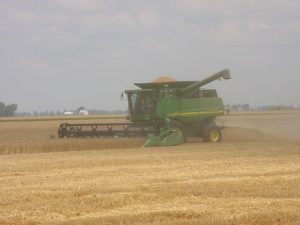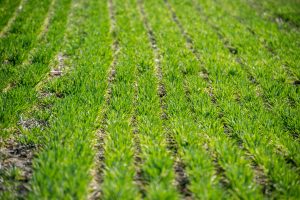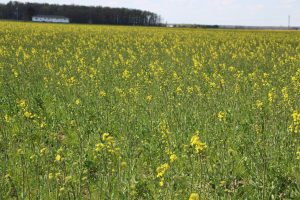Seeding Cover Crops after Wheat
By James Hoorman, Hoorman Soil Health Services
Wheat will be maturing early due to 90OF temperatures. Wheat grows best under cooler temperatures (less than 800F) and moist soil conditions. Wheat stands look great, but starts to die with hot dry temperatures, resulting in lower wheat yields. Wheat harvest may start in 4-5 weeks, so start ordering cover crop seed now. A long growing season after wheat allows for many cover crops options. 
Warm season cover crops grow in the summer but die with the first frost while cool season species generally survive the winter. Major categories include legumes, grasses, brassicas, and other broadleaves. Each cover crop has certain benefits and disadvantages. Cover crops benefits include adding carbon, improving water infiltration and soil structure, tying up soluble nutrients, and are good weed fighters.
Legumes and clovers are high nitrogen fixers before corn and are slightly more expensive. Warm season legumes include cowpeas and Austrian winter peas while cool season legumes include true winter peas and vetches (hairy, wooly, common, etc) and may add 50-150#N/A if allowed to bloom. Cowpeas require little moisture to germinate and grow while winter peas require more moisture. Austrian winter peas planted early (August) may produce up to 150#N/A but die with the first frost. True winter peas planted in September generally survive the winter but need spring growth to get 75-100#N/A. Hairy vetch or common vetch create a thick matt to reduce weeds, and produce up to 150-200#N/A, but may have hard seed. All these legume species can be crimped at blooming to maximize nitrogen (N).
Cool season clovers include red, crimson, and Balansa clover. Red clover produces 75-125# N/A, tolerates wet soils but can be difficult to terminate and provides late season N mineralization. Crimson and Balansa clover have deep fibrous roots and may produce 100-150#N at blooming. Balansa clover tolerates wet soil, is a great weed fighter, and survives cold Ohio winters better than Crimson. Both can be harvested for spring forage.
Warm season grasses include sorghum varieties, millets (pearl, fox, German etc.) and oats. Warm season grasses fix carbon, add SOM and have many fine roots to improve horizontal water infiltration.

Cool season grasses include cereal rye, annual ryegrass, barley, and wheat. Grasses absorb soluble nutrients, add carbon, improve soil structure, and can be harvested. Cereal rye seed is expected to be in short supply, so order early.
Sorghum varieties break up soil compaction allowing new roots to add carbon. Sorghum plants can generate 5-10X more roots when cut or mowed high and allowed to regrow. Oat varieties include spring oats (most common), forage oats, and winter oats (survives tempos down to single digits) and are highly mycorrhizal to improve soil structure.
Cereal rye is a common cool season grass planted late after corn and before soybeans. Cereal rye scavenges soluble nutrients, its deep roots improve water infiltration and soil structure, can be grazed or used for forage, and is the best all round weed fighters; out competing many noxious weeds. No-tillers should be careful planting cereal rye in front of corn, due to its high lignin content, allelopathic properties, and ability to tie up nitrogen. Most of the natural herbicide is in cereal rye leaves and stems which leach out slowly when it rains.
Brassica cover crops are small seeded, fairly inexpensive, and include daikon radish, kale, rape seed, and turnips. Radish, kale and rape have deep roots which reduce soil compaction, control weeds, and add soil microbial diversity. Radish should be planted in mixtures (2#/A or less) because when it dies at 200 F, it smells bad and may allow soluble nutrients to leach out. Turnips are shallow rooted and planted mostly for grazing along with kale. All brassicas are non-mycorrhizal meaning they are not a host for beneficial mycorrhizae soil fungi.

Kale and rape seed are very small and planted (by themselves) at 3-5#/A or at low rates into cover crop mixtures. Kale and rape are cool season, great pollinators, improve water infiltration, but may be difficult to terminate and should be planted in mixtures before corn. Planted alone, they may cause 5-10 corn bushel yield loss, but become less of a problem in mixtures. Rape and most mustards (like yellow rocket) have bright yellow flowers blooming now. Kale and rape can be difficult to kill. Other warm season broadleaf cover crops pollinators include buckwheat (shallow rooted) and sunflower (deep rooted). When ordering cover crop seed for government compensation, make sure to follow all government regulations.